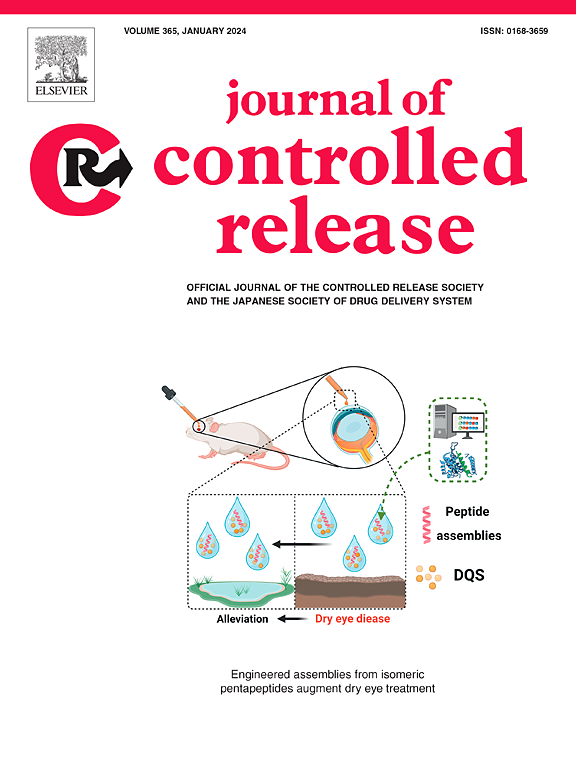Linoleic acid co-administration promotes oral delivery of exenatide-loaded butyrate-decorated nanocapsules
IF 10.5
1区 医学
Q1 CHEMISTRY, MULTIDISCIPLINARY
引用次数: 0
Abstract
Epithelial cell entrance and trans-epithelial transport are two essential processes that directly affect the efficacy of oral delivery of nanocarriers. Herein, a hydroxyethyl starch-based nanocapsule dual decorated with butyrate and octadecylamine (ODA) was first constructed to enhance transporter-mediated endocytosis and trans-epithelial transport, while reducing exenatide (EXT) loss during absorption. The epithelial barrier was then treated with linoleic acid (LA), which functioned as a cell membrane fluidity regulator. This treatment further improved oral delivery efficiency by lowering the energy cost of endocytosis through fluidizing of the cell membrane and increasing monocarboxylate transporter 1 (MCT1) expression on cell surfaces. The findings revealed that LA upregulated MCT1 expression by 3.26-fold, increased the cellular uptake of nanocapsules co-modified with butyrate and ODA by 4.52-fold, decreased ATP consumption for uptake in LA-pretreated Caco-2 cells to only 18.64 % of that in untreated Caco-2 cells, and increased their transcellular transport by 1.72-fold in a Caco-2/HT29-MTX-E12 co-culture monolayer. Therefore, the oral administration of EXT-loaded Bu-PEG-ODA NCs with LA significantly enhanced the oral bioavailability of EXT (Bu-PEG-ODA NCs group: 10.10 %, Bu-PEG-ODA NCs + LA group: 14.84 %), leading to a significant hypoglycemic effect with a 16.06 % relative pharmacological availability. This dosing strategy exhibited efficacious blood glucose control and pancreatic function recovery capabilities in the type 2 diabetes rat model. This study presents a unique co-optimization strategy based on two key processes in the oral absorption of nanocarriers, yielding significant advancements in the oral bioavailability of nanomedicines and improving their therapeutic efficacy.

求助全文
约1分钟内获得全文
求助全文
来源期刊

Journal of Controlled Release
医学-化学综合
CiteScore
18.50
自引率
5.60%
发文量
700
审稿时长
39 days
期刊介绍:
The Journal of Controlled Release (JCR) proudly serves as the Official Journal of the Controlled Release Society and the Japan Society of Drug Delivery System.
Dedicated to the broad field of delivery science and technology, JCR publishes high-quality research articles covering drug delivery systems and all facets of formulations. This includes the physicochemical and biological properties of drugs, design and characterization of dosage forms, release mechanisms, in vivo testing, and formulation research and development across pharmaceutical, diagnostic, agricultural, environmental, cosmetic, and food industries.
Priority is given to manuscripts that contribute to the fundamental understanding of principles or demonstrate the advantages of novel technologies in terms of safety and efficacy over current clinical standards. JCR strives to be a leading platform for advancements in delivery science and technology.
 求助内容:
求助内容: 应助结果提醒方式:
应助结果提醒方式:


